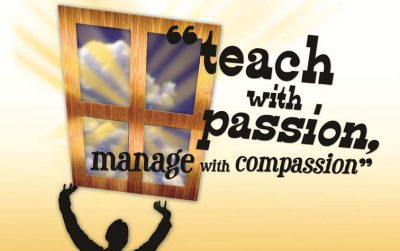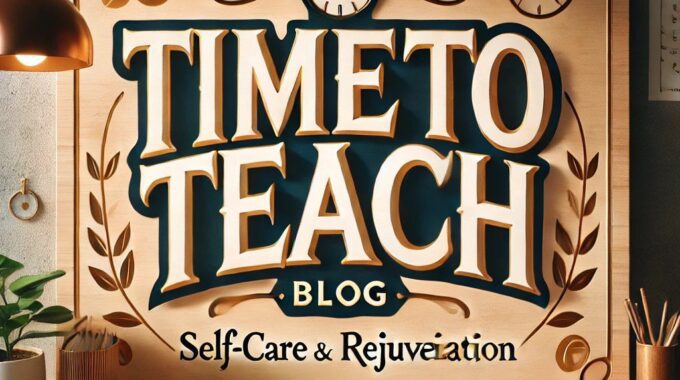As we turn the corner into spring, it’s the perfect time to refresh our teaching…
How We Express Ourselves: Making a Museum in a Box
We believe in thanking our sources! This post was sourced from the following blog/website: http://ilearntechnology.com/wordpress/?p=5887
The following is a new blog post related to education and teaching and relevant to our website visitors. The blog post is not based on the opinions or values of our company but is related to education and teaching, so we wanted to share it with YOU! If you ever have any questions please let us know. Now… on to the post!
In the last eight years, my posting habits have become pretty sparse, to say the least. Starting and running a school…it’s a lot. It keeps me busy and thoroughly exhausted. I miss it. I miss the cadence of posting regularly and interacting with my education friends virtually. I miss swapping ideas and being thoroughly steeped in what is happening in ed tech.
Not being in the classroom impacts this as well. When I was in the classroom, my posts had an immediate purpose; they were things that I was doing or dreaming of doing, with my students the next day.
As I was considering the best way to jump back into blogging, I couldn’t see going back to the way I’ve posted in the past. It’s not that there was anything wrong with the way I posted, but it isn’t where I am today. It doesn’t feel as natural and genuine. I also am unwilling to retire iLearn Technology all together. For one, I still come back here regularly to find a resource that I used with students to make recommendations to teachers. Secondly, I still have so much to share! It just may look a little different than it has in the past.
For all of my education friends who have been with me since 2007, I can’t tell you how enormously grateful I am for all of you. You have shaped me as an educator and a human more than you could possibly know. For those who have joined somewhere along my journey, I’m grateful for you as well! I hope that you’ll continue to find reasons to come to iLearn Technology.
These days, rather than merely sharing a technology tool that I’ve found useful, I want to do so within a broader context. At Anastasis, we are a school powered by questions. We love the way that questions open opportunities for exploration, discovery, and new connections within learning. Within our inquiry blocks, we use technology as a tool that helps us dive deeper, capture our learning, think critically, and make connections. My intent is to share our learning through the inquiry, introduce you to new (and old) technology tools that have supported our inquiry, and hopefully inspire you to use technology in new ways.
This will likely lead to longer posts that are packed full of ideas and links, the posts won’t be daily as they were for so many years, but (hopefully) they will be rich. I’d love your thoughts and input as I try out this new format! Thank you for sticking with me even as my posts have come to a crawl.
How We Express Ourselves: Museum in a Box
At Anastasis, every 5-6 weeks, we begin our exploration into a new inquiry block. These blocks begin over the summer when I dream and put together a new lens to view the inquiry block through for our primary, intermediate, and jr. high classes. Not to get too in the weeds about that process, but essentially I’m looking at Next Generation Science standards, Colorado Social Studies Standards, and Common Core as I build each block.
Over the last five weeks, students have been working on a block called: “How We Express Ourselves.” Based on the IB’s PYP, this is “an inquiry into the ways in which we discover and express ideas, feelings, nature, culture, beliefs and values; the ways in which we reflect on, extend, and enjoy our creativity; our appreciation for the aesthetic.” Using this as my base, the lens for our primary students became: Art can help us understand other cultures, histories, celebrations, rituals, and spiritual beliefs.
Students would explore this inquiry prompt through the following questions: What are artifacts? How does art help express and reflect culture? How do cultures express themselves through story? How does art help communicate and reflect the history and technology of the time? How is art used in celebrations? How has this changed throughout history? How do fossils tell us a story of the past? How do artifacts tell an account of the past? How has art been used throughout history to help us understand the values, understanding of the world, and spiritual beliefs? How do archeologists work? How does a museum curator work?
The nature of the inquiry is that each one of these questions grows legs and pretty soon we are delving deep into rich learning and exploration!
We began our inquiry block with a provocation; in this case, we took our students to explore artifacts at the Denver Art Museum. Students also examined artifacts using Google Arts and Culture online. During these trips, the learner’s job was to notice and wonder. What did they notice about the artifacts they were exploring? What did it make them wonder? This led to wonderful classroom discussions and further investigation of archeology and curators.
The primary students continued their exploration with the following some videos about how archeologists work and how museums curate.
I had stumbled across this Museum in a Box site as I was pulling together some resources for teachers, and my first thought was: we should make our own Museum in a Box collections with a central “hub” where the students could share their learning! I immediately showed the teachers this site, convincing them that we could figure out how to re-create the central hub.

We went to the local cigar store to collect some suitable “museum boxes” for each student with an extra box that would become the hub. The students went to work researching artifacts that they would like to create. They used the METKids website as well as the DK find out! site to conduct their research. The METKids was a great place to begin because even our early-readers could conduct research independently with this well-designed site. They learned about basic notetaking and made decisions about which items they would like to include in their own collections. Next, they set to work creating their artifacts out of clay, paper, fabric, paint, and glue. They used their artifacts to measure and develop dividers for their boxes.

Each student made an audio recording with a free app called Voice Recorder (ios) saved as an MP3 file.
-

Raspberry Pi, RFID reader, Speaker -

Museum Box “Hub”
While the students were busy at work, I was too. I wanted to help create a hub so that the students could place their artifact on our main box and have it trigger the kids sound file. To do this, I used a Raspberry Pi, a cheap Target dollar-spot speaker, an RFID reader, and RFID stickers. My Raspberry Pi coding skills are severely limited, but I knew that it was possible to connect an RFID reader to the Raspberry Pi and have it trigger a saved audio file. Internet to the rescue! After a quick search, I found an Instructables with pictures to help me out! Following the directions, I connected the pins from the Pi to the RFID reader and installed a power button and an LED light so that I could see when it was powered on. I deconstructed and connected the cheap speaker. My husband, eager for a reason to use his CNC machine, designed the top of the box so that the speaker could sit inside the box and allow for the sound to come out (the honeycomb design you see in the pictures). To make it extra fancy, he also carved our school logo out of the top of the cigar box.
Teachers sent me the kid’s audio files, and I uploaded the MP3 files as individual folders on the Pi and linked each file to an RFID sticker. When the RFID sticker gets passed over the RFID reader, it plays the associated audio file!

Now for the most fun: teaching the kids how all of the “guts” work and showing them how the stickers cause their audio files to play! They were suitably impressed by this feat! The kids placed the stickers on the bottom of the corresponding artifact, and we had our very own museums curated with their voice walking each visitor through the collection.
The kids learned so much in this block! The obvious: archeology, curation, artifacts, the technology behind our boxes. The less obvious: research and note-taking, reading with expression, measurement, making decisions about the resources needed to create their own artifacts, reasoning with evidence, building explanations, making interpretations, making connections, observing closely, considering different viewpoints, and a hundred other “soft skills” that occur naturally in the inquiry process.

Teachers and Educators are our heroes. We want to thank you for the work you do!
Yours In Education!
Time To Teach













Comments (0)